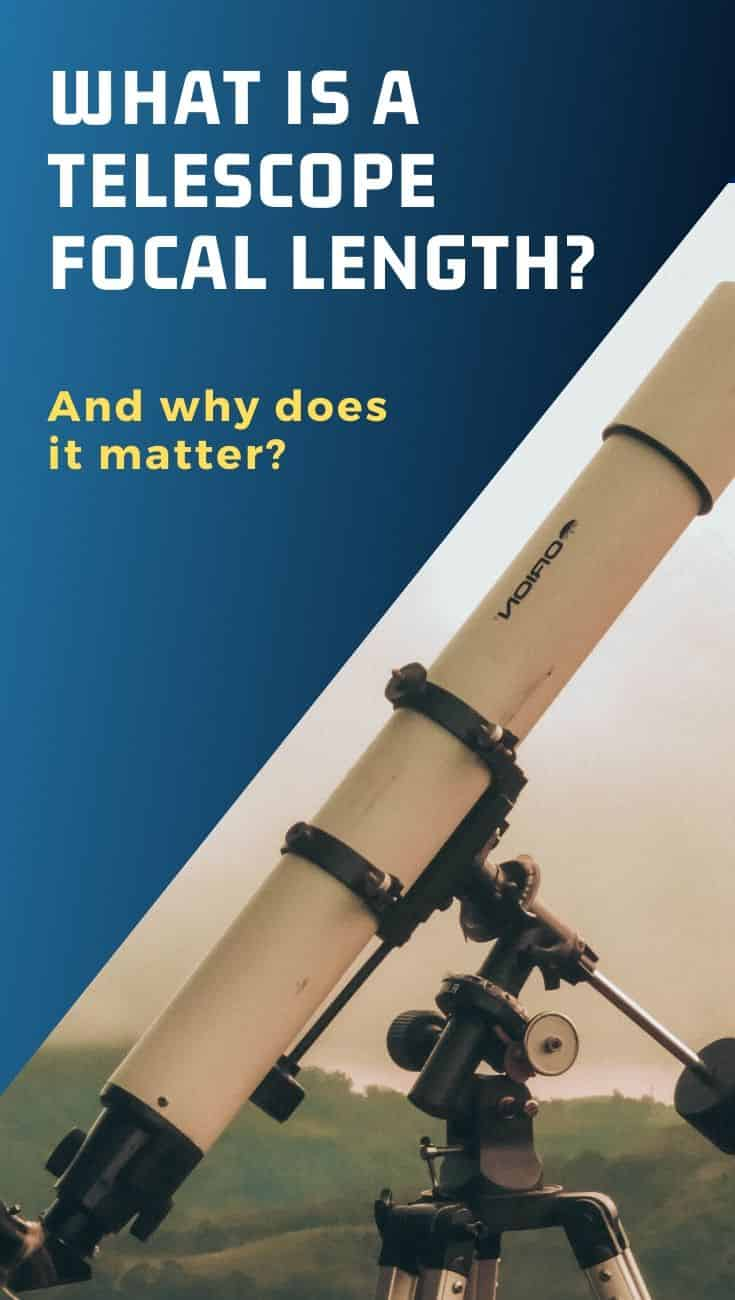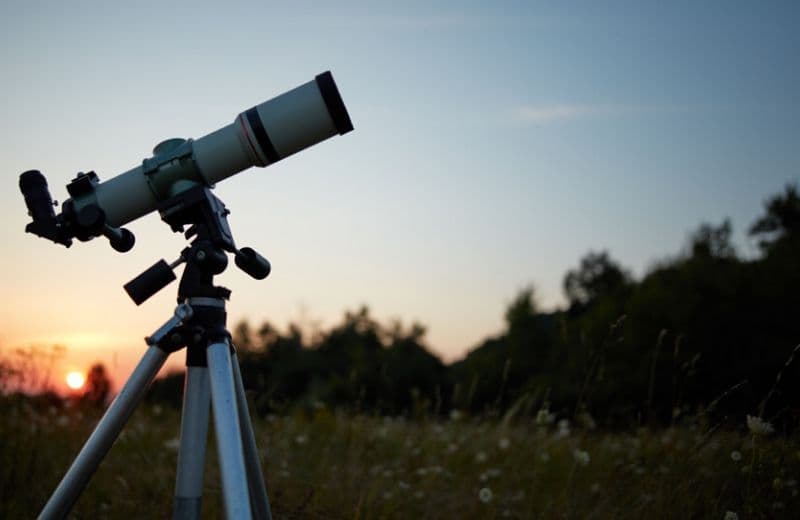Telescope Focal Length Explained
Last Updated: 11 June 2020

The focal length is one of the few important measures on a telescope that can greatly impact your visual experience and the quality of the image you’ll see through the eyepiece. Technical terms can be intimidating to anyone new to stargazing at first, but it is important to understand the influence of the focal length on a telescope’s performance. This will allow you to make a more educated choice when purchasing or upgrading your telescope.
What does Focal Length mean?
A telescope work as follow: light is collected through the telescope aperture and is then transmitted toward the focal point (focuser) where it is focused for you to see through the eyepiece.
The focal length is essentially the distance (in millimetres) that light travels inside the telescope from its entry point (the aperture) to the exit point (the focuser where you place your eyepiece or your DSLR camera, also called prime focus imaging).
In a refractor or a reflecting telescope, the focal length start at the aperture (primary mirror or objective lens) and ends at the focuser where the light rays come together. Generally, when looking at a telescope, it’s safe to assume that a long tube means a long focal length and a short tube means a shorter focal length.
However, some telescopes type such as the Schmidt-Cassegrain have a fairly different optics setting and are equipped with secondary mirrors on which the light is bounced off before being sent to the focuser. This means that they have a much longer focal length even tho their tube looks much smaller than a Newtonian telescope.

Short focal length telescopes are astrophotographers favourites.
Can you calculate your telescope’s focal length?
There is no formula to calculate the focal length of your telescope. It is a fixed measure that is unique to your telescope and can be found on a label usually placed on the tube. It is, however, possible to reduce it by adding a focal length reducer which is useful for astrophotography or even multiply it by placing a Barlow lens in the focuser, but that’s a topic for another article.
The focal length is, however, an important element for two major telescope formula. The first thing you can calculate is the magnification (or power) of your telescope. The second thing you can calculate is the focal ratio (brightness and field of view).
Focal Length and Magnification
To calculate your telescope magnification, you simply need to divide the focal length of the telescope by the focal length of the eyepiece mounted on it.
Remember, this is all in millimetres. So if you have a telescope with a focal length of 2000mm and a 20mm eyepiece, then your magnification will be 2000/20=100!
Focal Length and Aperture
The focal length is part of another formula which allows for calculating the focal ratio of a telescope. This time, you will need to divide the focal length by the aperture of the telescope.
Let’s say you have a reflecting telescope with an aperture of 6 inches (152.4mm) and a focal length of 1000mm, your focal ratio is 1000/152.4= 6.56! In astronomical jargon, this would be called f/6.5.
Does it influence the field of view?
Yes, it does! A longer focal length will shorten the field of view but increase magnification, which is ideal for observing planets and the moon. A shorter focal length offers a larger field of view which is better for astrophotography and observing galaxies, nebulas, and other deep sky objects as they are larger but dimmer targets.
There is an eternal debate “shorter versus longer focal length” in the astronomy community, but at the end of the day, it’s down to personal preferences and what works for you. A perfectionist will want to get every telescope settings perfectly tuned while an astronomer amateur will be perfectly happy to see galaxies with a “non-optimized” focal length. Do you enjoy astronomy as a personal and occasional hobby or are you planning on publishing your astrophotography work in books, magazines and online publications?
The focal length on the most powerful telescopes
Even though the Hubble space telescope measure 13.3 meters, it has a focal length of 57.3 meters because it is a Cassegrain reflector telescope. The secondary mirror effectively stretches the focal length and allows for greater magnification.
The James Webb space telescope packs an impressive focal length of 131.4 meters, more than twice than Hubble!
The largest telescope on Earth, the Gran Telescopio Canaria in Spain, holds a record-breaking focal length of 169.9 meters (almost as tall as the Washington Monument)! Note that this is not the size of the telescope… The light is effectively bounced off a few mirrors so the path that the light travels is increased inside the telescope.
Frequently Asked Questions
What is a good focal length for a telescope?
It all depends on what you want to see in the night sky, for planets and the moon, a longer focal length is helpful because it increases the magnification power of the telescope. For deep-sky objects such as galaxies, a shorter focal length is better as the field of view will be wider.
How does the focal length affect telescopes?
The focal length directly impacts the magnifying power of your telescope as well as the field of view: two very important factors for stargazing and astrophotography.
How to find my telescope focal length?
You can generally find the focal length on a label placed on your telescope’s tube or inside the instruction manual.

Telescopes are complex optical systems and it can take a little time to learn how to use them optimally. I hope to make this learning process a little easier by providing some of my tips and my experience on how to get the most out of your telescope.
Recommended Reading
If you don’t know where to start, here are the most important things to know and do before buying your first telescope.
